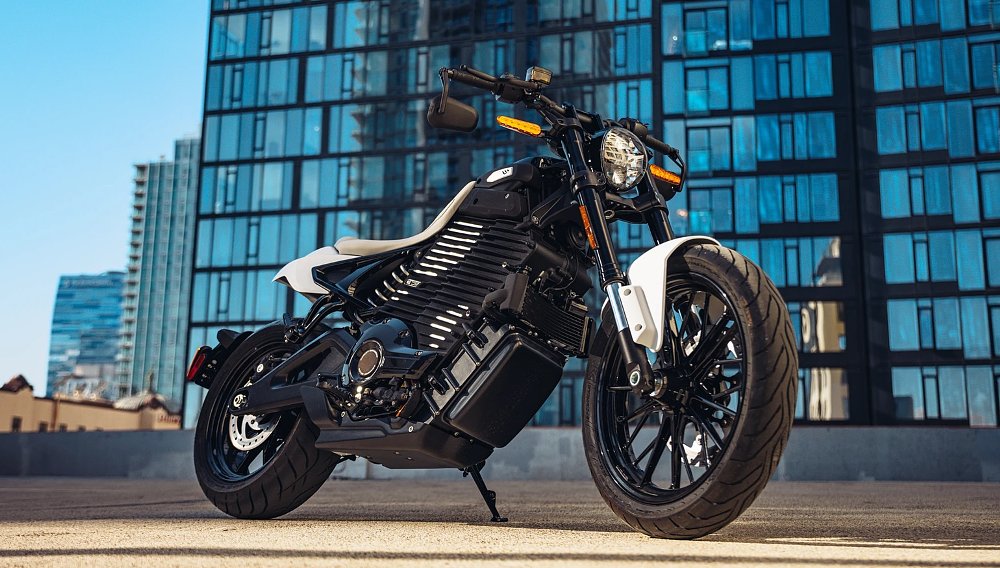The Can-Am name, most associated recently with three-wheelers, is back on two wheels as the company pulled the wraps off its two new electric motorcycles for 2025, the city-commuter Pulse and the dual-sport Origin. These are definitely not your grandfather's Can-Am. Or, if you are a grandfather, maybe not your old Can-Am.
The two new Can-Ams bring a few twists of their own to the current range of electric motorcycle offerings on the market and promise to be a viable, highway-capable transportation option coming in at prices starting at $14,000 in the United States. The two models share the same drivetrain while different wheels and suspension position them for differing missions. Pulse 73 and Origin 73 editions get upgraded appearance packages.
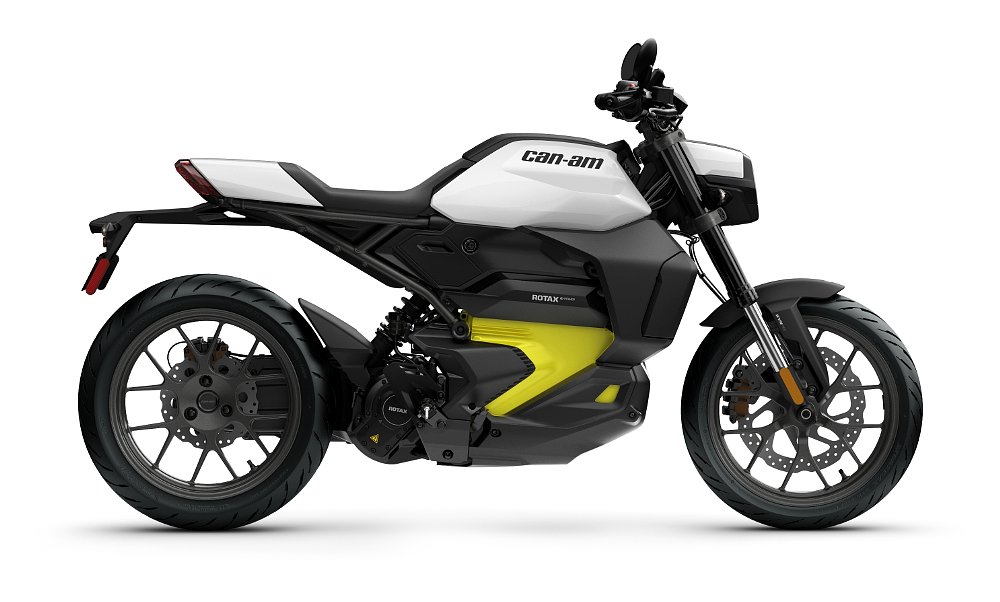
Pulse and Origin: What's the same
If you were expecting Can-Am to draw on its history of off-road motorcycles from the 1970s and go full retro cosplay with its new electric models, you'll be disappointed. On the contrary, the bikes have a clean, modern design and there's no attempt to disguise the fact that there's a big lithium-ion battery at the center of it all.
"We wanted to celebrate the battery, not be a black box in a cage as an afterthought," said Dominick Lemerise-Gauvin, manager of Global Product Strategy. So they painted it yellow.
That battery is an 8.9 kWh lithium-ion unit. Can-Am says the Pulse and Origin drivetrain produces 47 peak horsepower, good for a top speed of 80 mph. One twist is that the entire drivetrain — battery, motor, inverter, and on-board charger — are liquid-cooled. The Can-Ams have a radiator tucked up front in the fairing, much like what you'd expect to see on a gas-powered motorcycle.
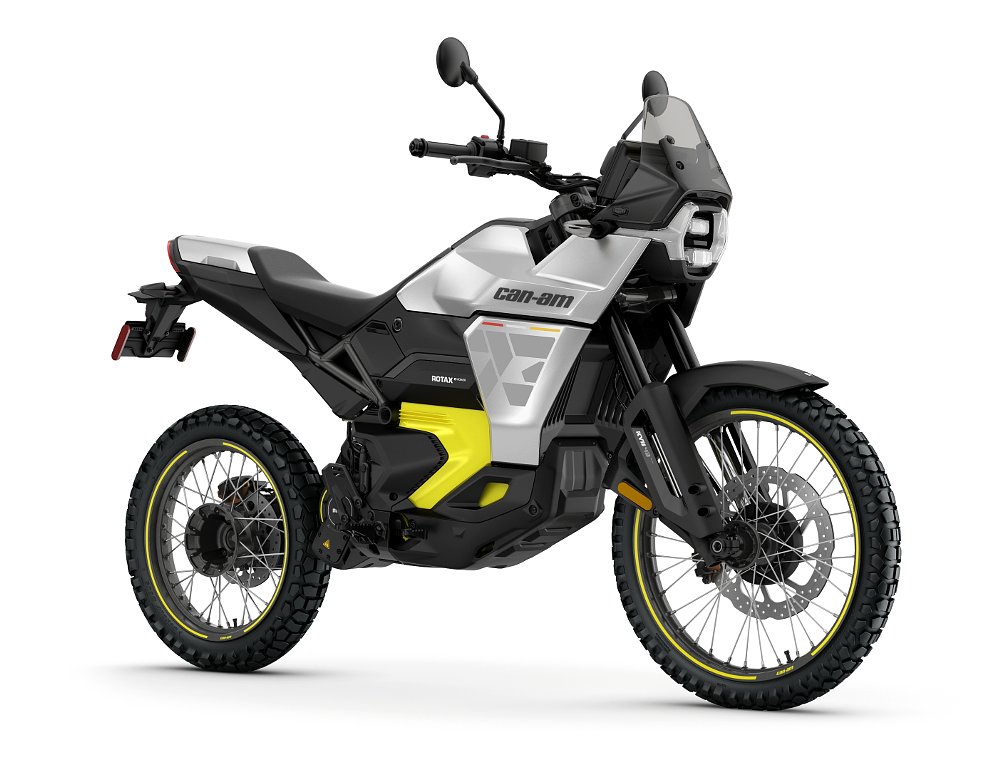
Just as liquid cooling offers advantages of performance and longevity in internal-combustion engines, Can-Am says it does the same for an electric powertrain. Keeping all the battery cells at the same temperature extends battery life. It can also speed up charging, because systems typically limit charging when the battery is too hot. With coolant keeping the battery at the optimal temperature, you can pull in from a hard ride and start recharging sooner, without having to wait for the battery to cool off. Additionally, some electric models in the past, particularly, were known for cutting power to prevent the battery from overheating. If your battery is getting hot because, for example, you're riding hard to keep up with traffic on the 405 freeway in Southern California, you really don't want to suddenly have reduced power available.
The onboard charger is compatible with Level 1 or Level 2 charging, and both bikes come with a J1772 outlet. So you can charge overnight at home at Level 1 on a regular household circuit or at a charging station using Level 2, which Can-Am says will bring the battery from 20% to 80% in 50 minutes.
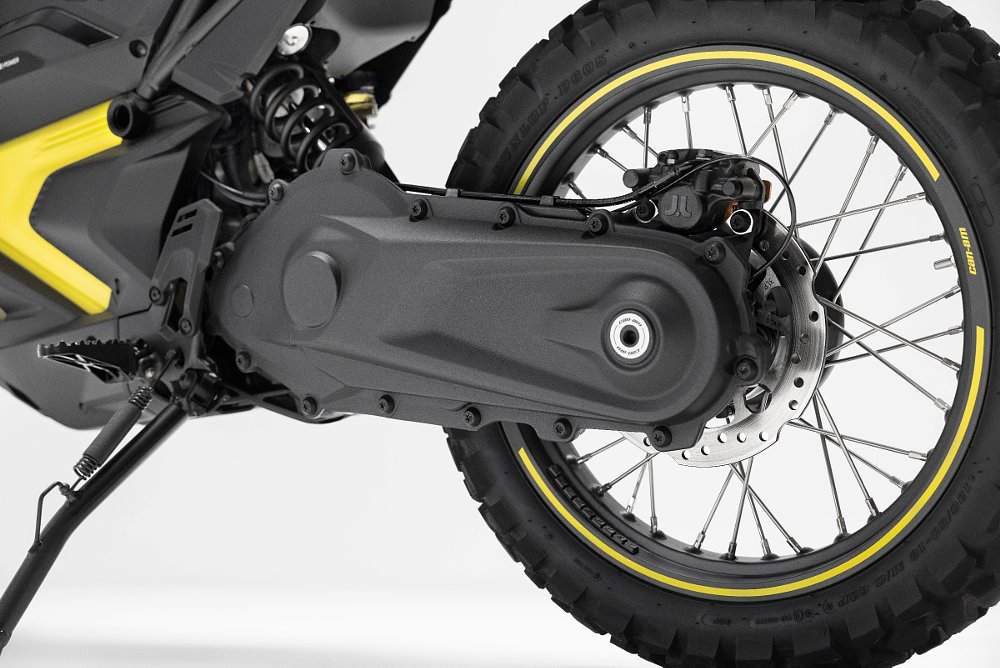
Another interesting feature of the Can-Am drivetrain is the enclosed chain final drive. Many electric motorcycles use belt final drive, in part because the absence of the sounds of an internal-combustion engine make the rattling noises of a metal chain more noticeable and disagreeable. Can-Am took a different approach and used an enclosed chain, which also offers the advantage of vastly reducing chain maintenance. The enclosure keeps the chain clean and bathed in oil, and an automatic tensioner keeps it appropriately taut. As a result, the first service is due at 5,000 miles, and thereafter at 10,000-mile intervals. Those of you particularly annoyed with your manual scolding you to clean your chain and check tension every 600 miles can appreciate that.
While most electric motorcycles these days use deceleration forces to charge the battery, the Can-Am takes regen, as it's commonly called, a step further. The amount of passive regeneration can be adjusted to change the feel of rolling off the throttle, the equivalent of engine braking on a gas-powered motorcycle. But the rider can also employ active regen by twisting the throttle in the opposite direction to decelerate and feed more energy back into the battery. The Pulse and Origin also have a reverse gear, which is activated by switching into reverse mode and then twisting the throttle forward.
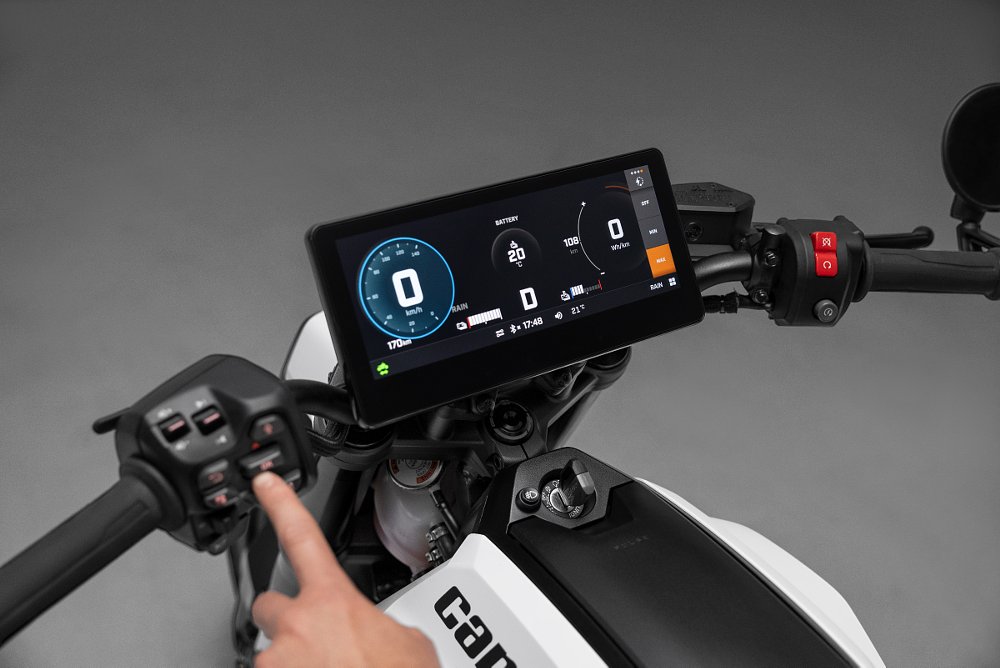
Other shared features include single J.Juan brakes at both ends, a full-color display that's more than 10 inches wide, swiped from some of Can-Am's three-wheeled models, and integrated Apple CarPlay.
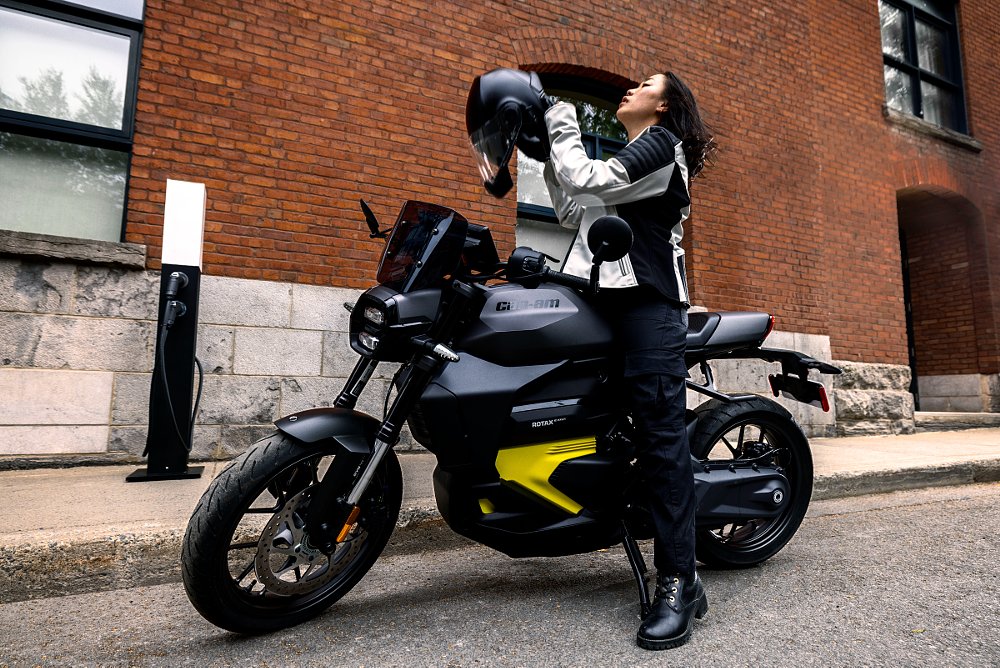
Pulse and Origin: What's different
Can-Am isn't trying to fool consumers by pretending you're going to take trans-continental journeys on your 47-horsepower electric motorcycle. In the presentation, Lemerise-Gauvin described the Pulse as a "commuter motorcycle," but noted that the Origin adds off-road ability that makes it a "a true dual-purpose bike." A few changes make the difference and also introduce some subtle differences in performance.

The electronics also differ on the two models. The Pulse has four ride modes: Normal, ECO, Rain, and Sport+. The Origin adds an Off-Road and Off-Road+ mode. While ABS is always on in the other modes, the off-road option on the Origin allows the ABS to be deactivated at the rear wheel, in addition to turning off traction control.
The slightly different dimensions, ergonomics, and therefore aerodynamics, contribute to different projected ranges for the two models. The difference is small, about 10% better for the Pulse. Can-Am claims the Pulse has a range of 100 city miles, 80 miles in the combined city and highway test, and 55 miles at a sustained 50 mph. The Origin, a little less.
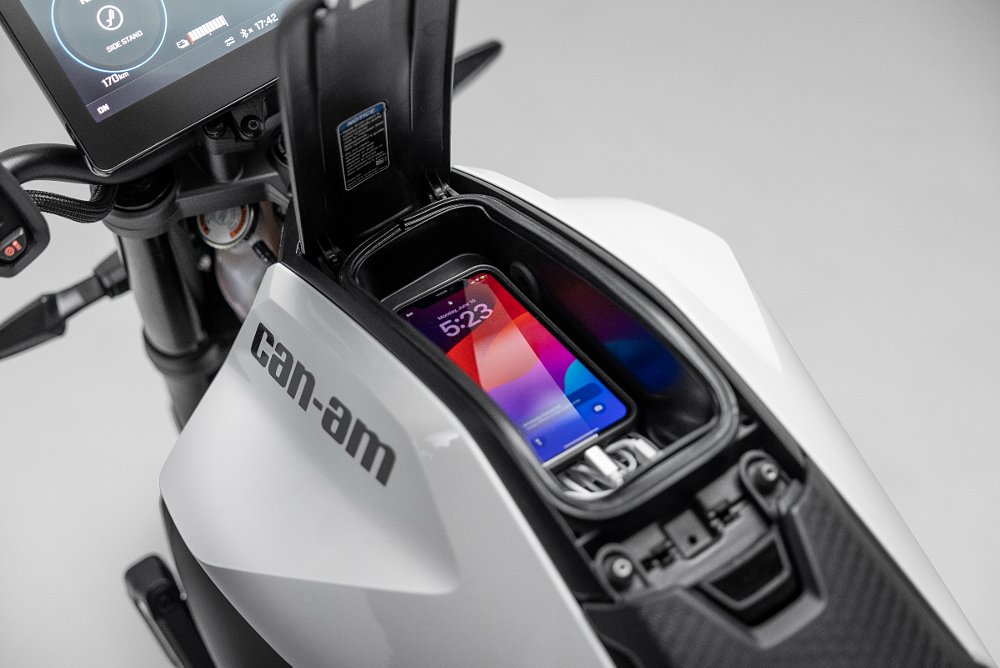
Of course the much more important question is how the projected range compares to real-world performance. Electric vehicle manufacturers use a standardized test to determine projected range, so it's not like they're just making up numbers. But at the same time I don't think Common Tread has ever done a long-term test of an electric motorcycle and gotten the projected range in any kind of real-world riding. We'll get a first test of the Pulse and Origin next month, but in a limited and structured introduction of the models to the motorcycle media and influencers, we can't come away with a definitive answer on what range a rider can truly expect in a variety of conditions. Once we have the chance to live with a Pulse or an Origin for a while, we'll be able to provide more reliable information. (Spoiler alert: We have a test of a new electric motorcycle coming later this week that discusses these issues in more depth.)
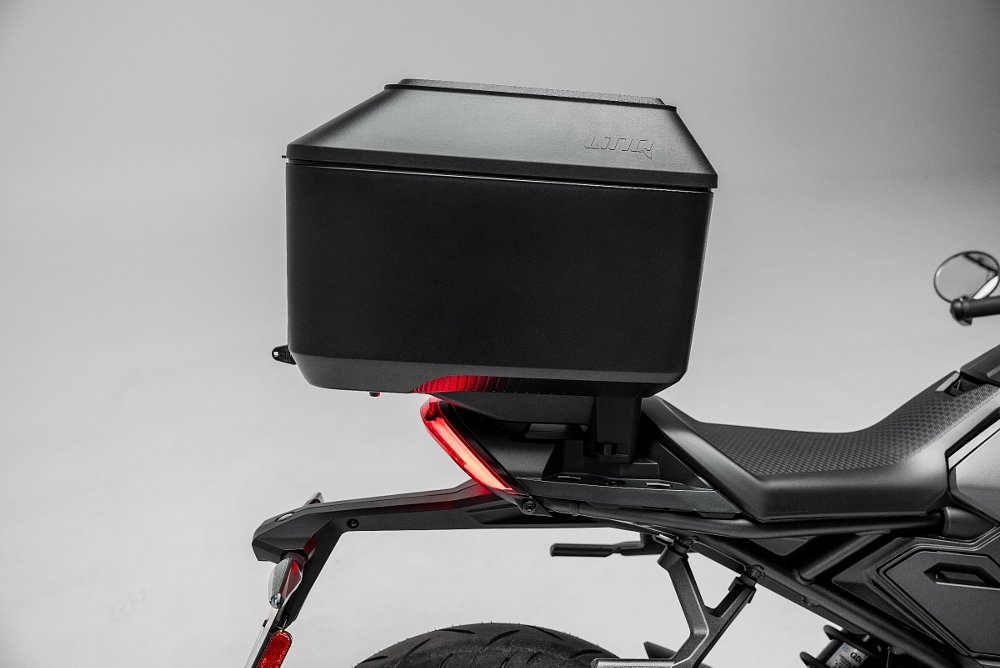
Who's it for?
While the Can-Am name first made a splash 50 years ago with off-road bikes, the new electric bikes clearly start an entirely new chapter. But in the bigger picture, it makes a lot of sense. Can-Am parent company BRP has already made an electric snowmobile, among other electric-powered products, so it has experience not just with the drivetrain, but also in dealing with issues such as reduced performance of batteries in cold temperatures. You may notice that the drivetrain has Rotax branding on it. That's another BRP division.
Can-Am says the Pulse and Origin are designed to be accessible and "friendly" for new riders but still pack enough performance to entertain experienced riders. Can-Am predicts that 50% of buyers will be new to motorcycling. According to the company's market research, those potential new riders appreciate the simplicity of an electric motorcycle, with no clutch or gears, and the low maintenance. The 47-horsepower output means the bikes will just barely qualify for A2 license holders who are moving up from their first scooter or motorcycle.
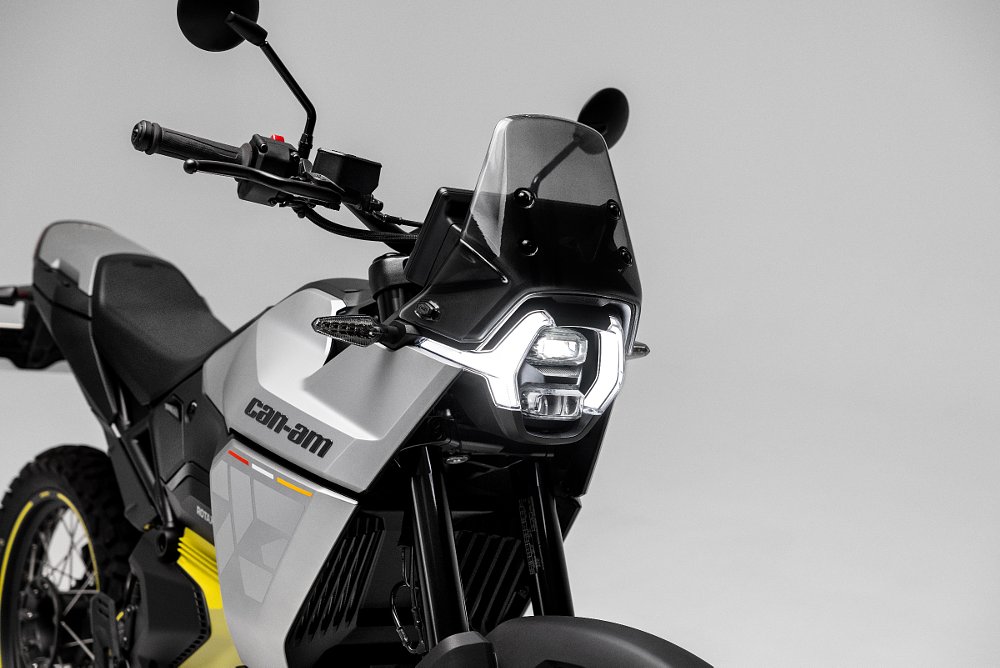
Starting prices on the Pulse and Origin are only slightly less than competitors such as the LiveWire S2 Del Mar and the Zero S, both of which offer more power and similar or better range. A Zero FXE costs a little less, provides almost exactly the same power, and weighs considerably less. Can-Am has brought some clever features to the electric motorcycle marketplace, but it's still an open question whether that will be enough to put Can-Am at the front of the pack.
Watch for our first impressions next month as we start learning the answers.
| 2025 Can-Am Pulse | 2025 Can-Am Origin | |
|---|---|---|
| Price (MSRP) |
Bright White: $13,999 Carbon Black: $14,499 Pulse 73: $15,999 |
Bright White: $14,499 Carbon Black: $14,999 Origin 73: $16,499 |
| Drivetrain | Liquid-cooled 8.9 kWh battery, clutchless single speed with reverse, enclosed chain final drive | |
| Claimed horsepower | 47 peak, 27 continuous | |
| Claimed range |
100 miles city 80 miles combined 55 miles highway (50 mph sustained) |
90 miles city 71 miles combined 52 miles highway (50 mph sustained) |
| Claimed battery capacity | 8.9 kWh lithium-ion | |
| Claimed charge time |
0%-100% Level 1: 5:15 20%-80% Level 1: 3:10 0%-100% Level 2: 1:30 20%-80% Level 2: 0:50 |
|
| Front suspension | KYB 41 mm inverted fork; 5.5 inches of travel | KYB 43 mm inverted fork; 10 inches of travel |
| Rear suspension | Sachs shock adjustable for preload; 5.5 inches of travel | KYB HPG shock, adjustable for preload, compression, and rebound damping; 10 inches of travel |
| Front brake | Single J.Juan two-piston caliper, 320 mm disc with ABS | |
| Rear brake | Single J.Juan one-piston caliper, 240 mm disc with ABS | |
| Rake, trail | 27.2 degrees, 3.97 inches | 30 degrees, 4.6 inches |
| Wheelbase | 55.6 inches | 59 inches |
| Seat height | 30.86 inches | 34.0 inches |
| Tires | Dunlop Sportmax GPR-300 110/70R17 front, 150/60R17 rear | Dunlop D605, 90/90-21 front, 120/80-18 rear |
| Claimed weight | 390 pounds | 412 pounds |
| Available | Early 2025 | |
| Warranty |
Vehicle: 24 months Battery: Five years or 31,068 miles |
|
| More info | www.can-am.brp.com | |











